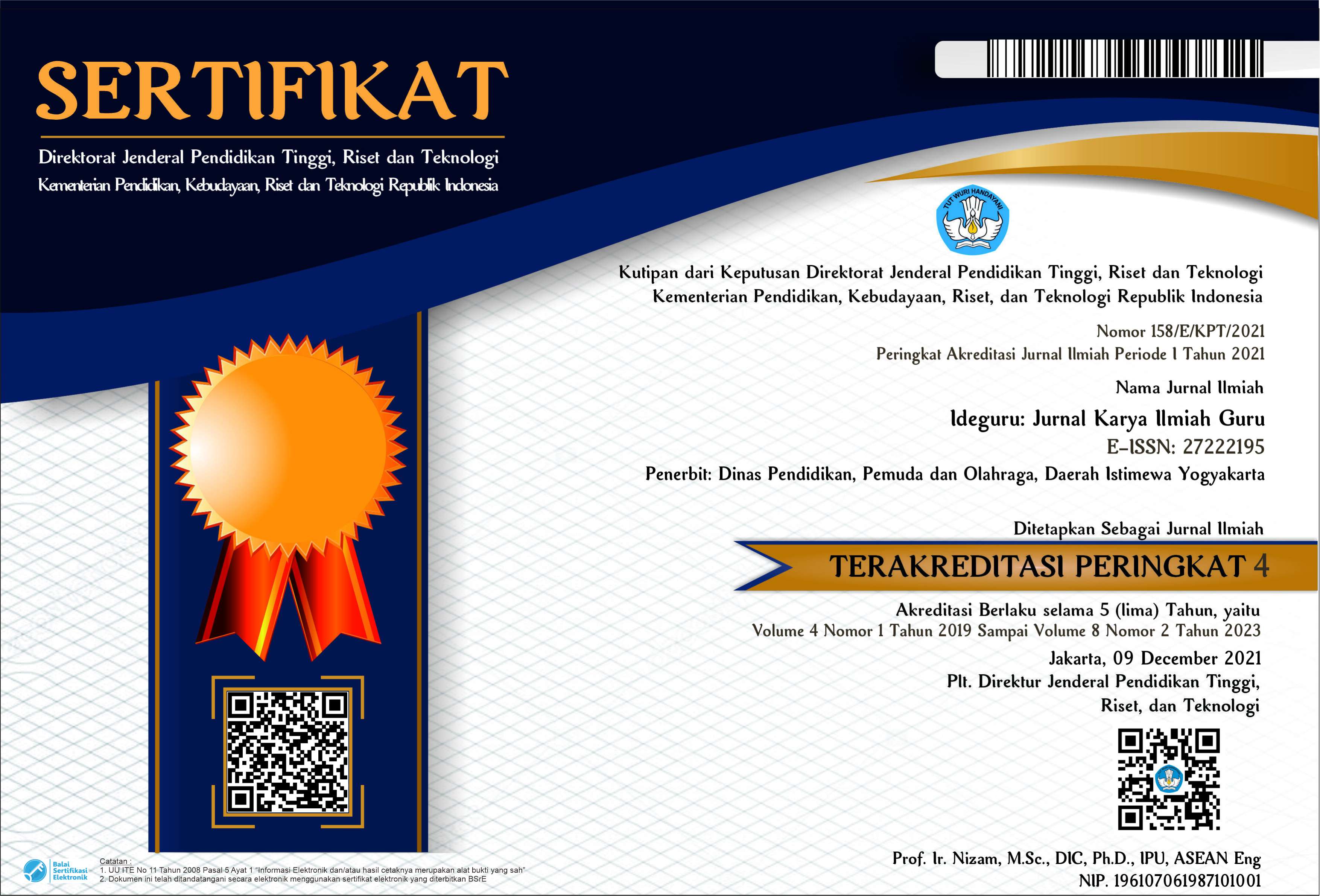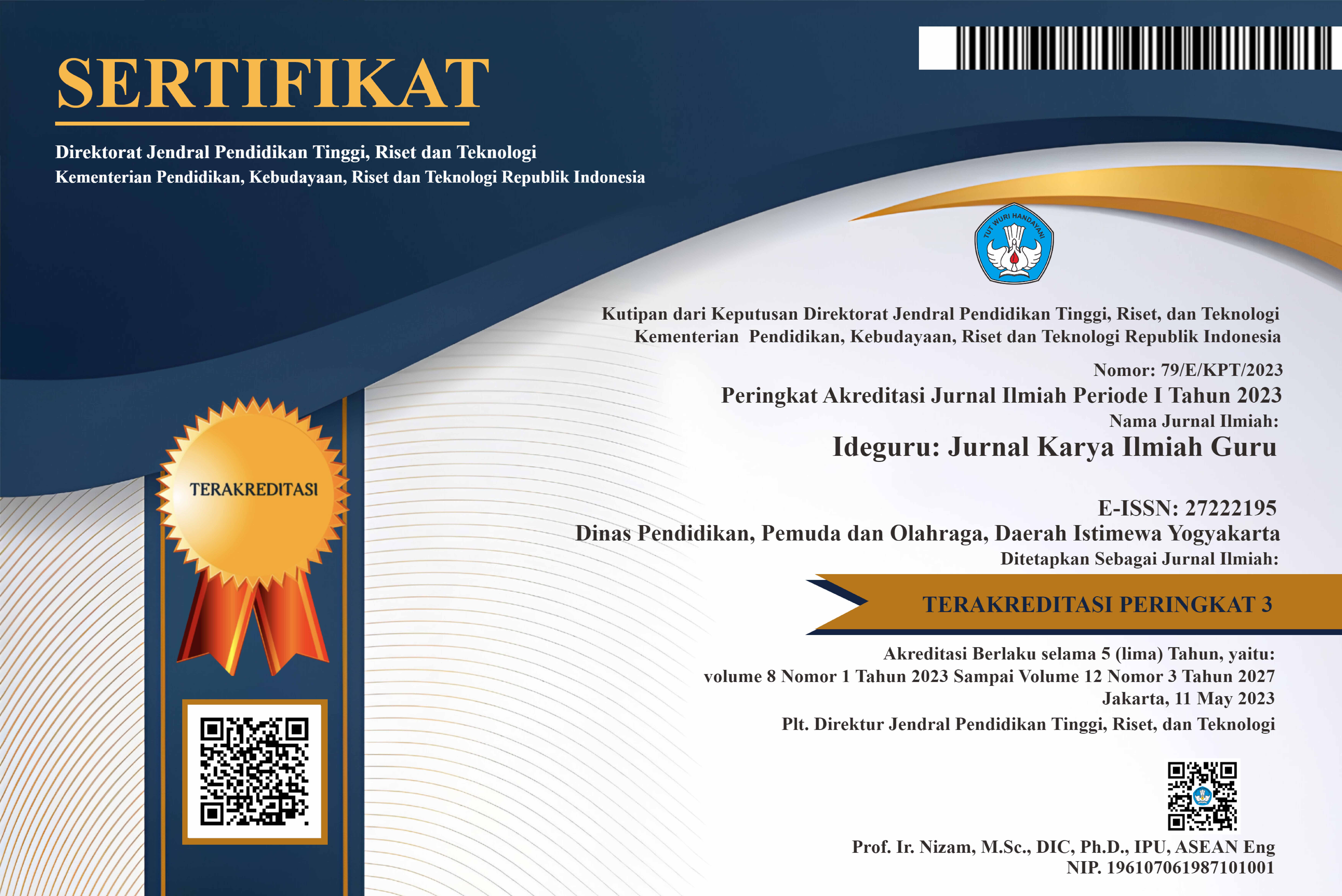SYNECTICS LEARNING MODEL TO INCREASE THE ACTIVITY AND LEARNING OUTCOMES OF CHEMISTRY
Abstract
The problem of achieving student learning outcomes and activeness in learning chemistry in Kelas X Teknik Jaringan Tenaga Listrik (TJTL) in SMKN 1 Pleret has not been as expected. In this study, the aim of this research is to find out how to increase the activity and learning outcomes of chemistry through the Synectics learning model which includes 3 aspects, namely cognitive, affective, and psychomotor aspects. This type of research is a classroom action research that lasts 2 cycles, each cycle consisting of 4 stages, namely planning, action, observation and reflection. The research subjects were students of class X TJTL with a total of 36 male students. Data collection techniques in the form of tests and non-tests, and descriptive quantitative and qualitative data analysis. The results showed that the use of synectics learning models can increase student activity and learning outcomes. From the data obtained an increase in activeness of 25.40%, the students were very active 63.89% in cycle 1 to 89.29% in cycle 2. While the data on student learning outcomes obtained data on KKM students in pre-cycle 14.86%, cycle 1 was 61, 11% and cycle 2 is 88.89%. Or an increase of 46.25% from pre-cycle to cycle 1, and an increase of 27.78% from cycle 1 to cycle 2.
PDF Downloads
Copyright (c) 2020 Sri Purwanti

This work is licensed under a Creative Commons Attribution 4.0 International License.

 DOI:
DOI:














